Autocratic vs. Democratic Leadership in Business Organizations
VerifiedAdded on 2023/04/20
|8
|597
|383
Essay
AI Summary
This essay provides an overview of two prominent leadership theories: autocratic and democratic leadership styles. Autocratic leadership is characterized by a leader's authoritative decision-making without input from team members, useful in emergencies but potentially demotivating. Democratic leadership, on the other hand, involves participatory decision-making, encouraging creativity and job satisfaction among employees. The essay discusses the implications of each style, noting the benefits and drawbacks in organizational settings, and concludes with references to relevant academic sources. Desklib offers a platform for students to access similar solved assignments and study resources.
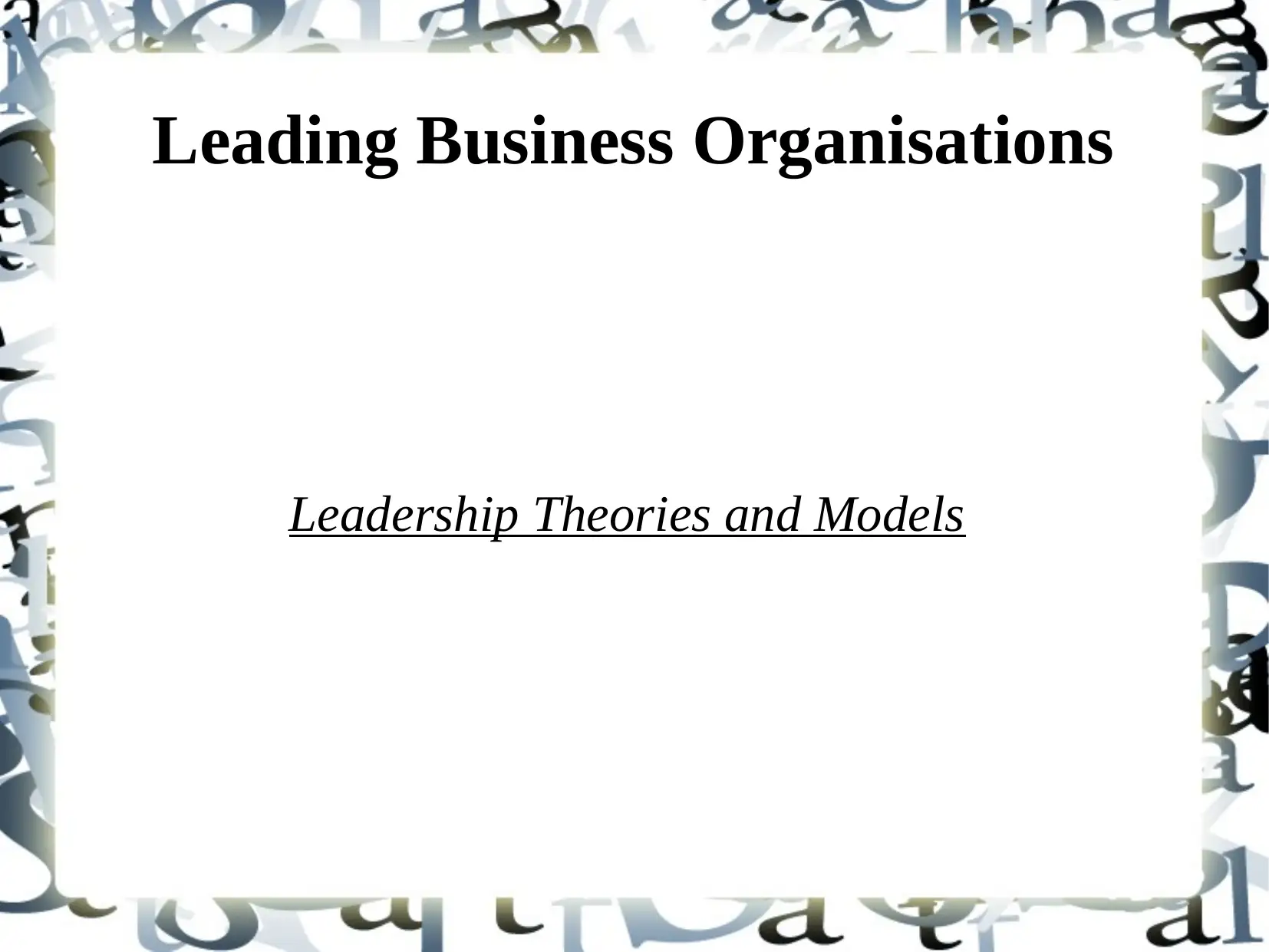
Leading Business Organisations
Leadership Theories and Models
Leadership Theories and Models
Paraphrase This Document
Need a fresh take? Get an instant paraphrase of this document with our AI Paraphraser
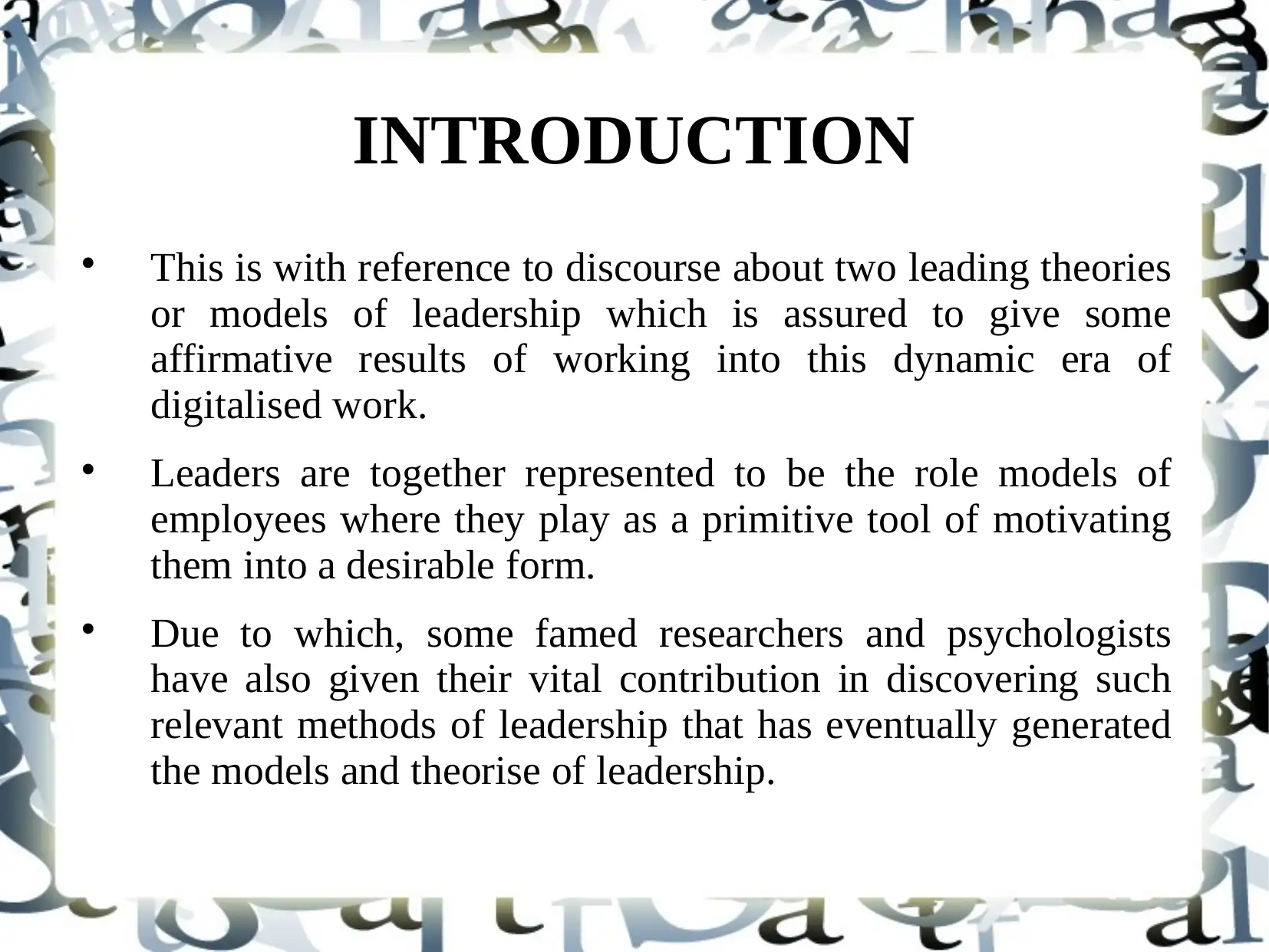
INTRODUCTION
This is with reference to discourse about two leading theories
or models of leadership which is assured to give some
affirmative results of working into this dynamic era of
digitalised work.
Leaders are together represented to be the role models of
employees where they play as a primitive tool of motivating
them into a desirable form.
Due to which, some famed researchers and psychologists
have also given their vital contribution in discovering such
relevant methods of leadership that has eventually generated
the models and theorise of leadership.
This is with reference to discourse about two leading theories
or models of leadership which is assured to give some
affirmative results of working into this dynamic era of
digitalised work.
Leaders are together represented to be the role models of
employees where they play as a primitive tool of motivating
them into a desirable form.
Due to which, some famed researchers and psychologists
have also given their vital contribution in discovering such
relevant methods of leadership that has eventually generated
the models and theorise of leadership.
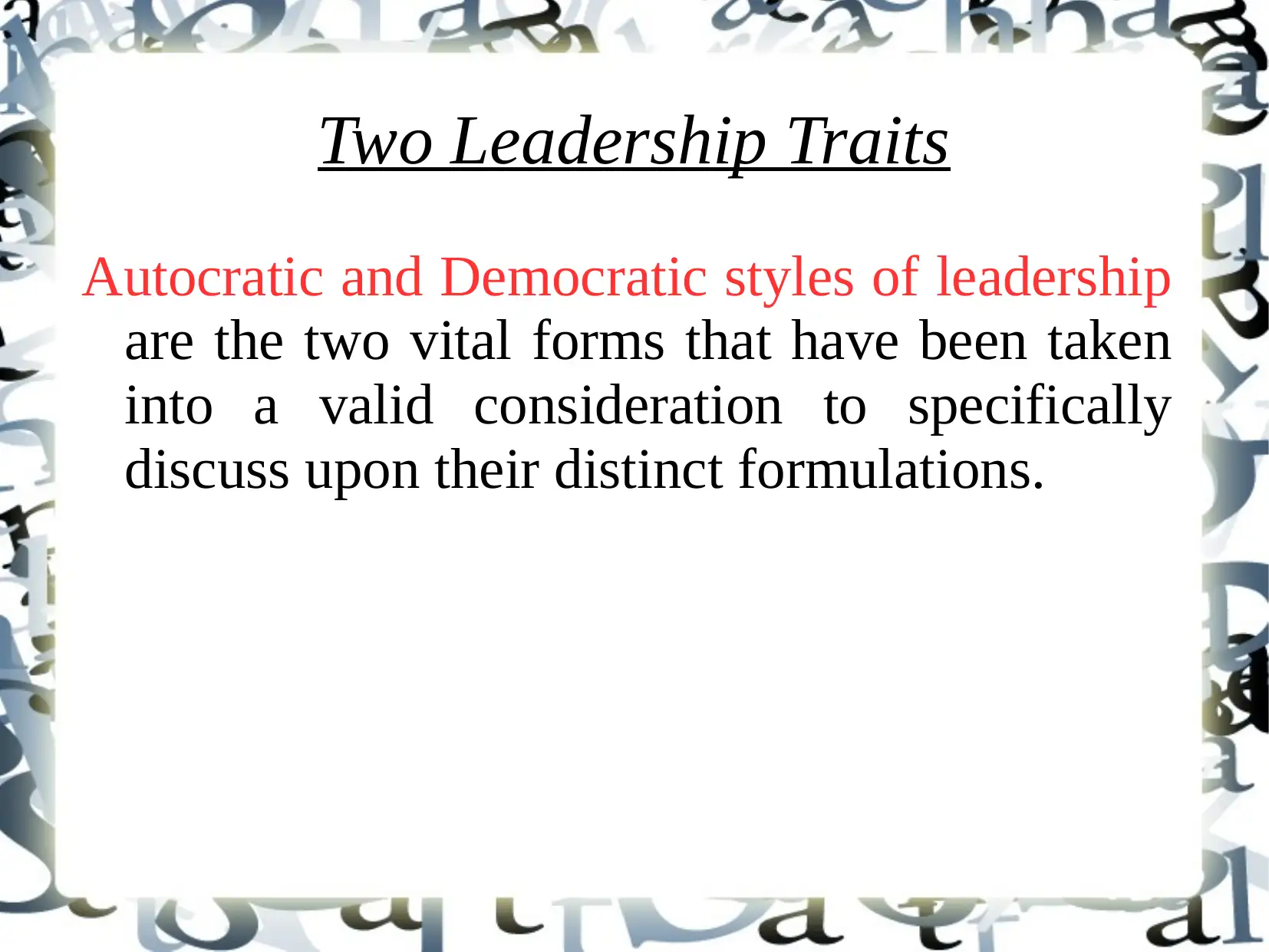
Two Leadership Traits
Autocratic and Democratic styles of leadership
are the two vital forms that have been taken
into a valid consideration to specifically
discuss upon their distinct formulations.
Autocratic and Democratic styles of leadership
are the two vital forms that have been taken
into a valid consideration to specifically
discuss upon their distinct formulations.
⊘ This is a preview!⊘
Do you want full access?
Subscribe today to unlock all pages.

Trusted by 1+ million students worldwide
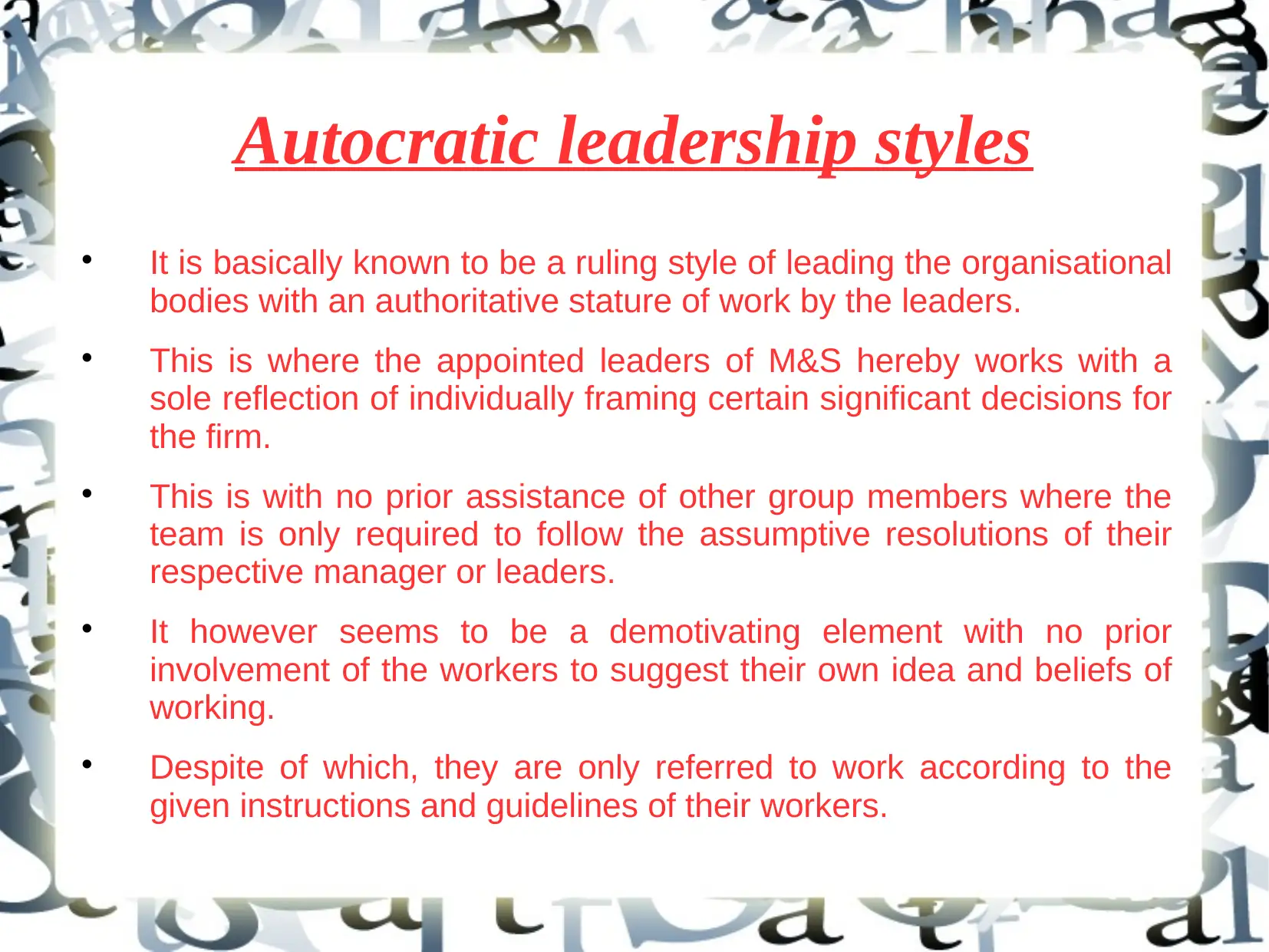
Autocratic leadership styles
It is basically known to be a ruling style of leading the organisational
bodies with an authoritative stature of work by the leaders.
This is where the appointed leaders of M&S hereby works with a
sole reflection of individually framing certain significant decisions for
the firm.
This is with no prior assistance of other group members where the
team is only required to follow the assumptive resolutions of their
respective manager or leaders.
It however seems to be a demotivating element with no prior
involvement of the workers to suggest their own idea and beliefs of
working.
Despite of which, they are only referred to work according to the
given instructions and guidelines of their workers.
It is basically known to be a ruling style of leading the organisational
bodies with an authoritative stature of work by the leaders.
This is where the appointed leaders of M&S hereby works with a
sole reflection of individually framing certain significant decisions for
the firm.
This is with no prior assistance of other group members where the
team is only required to follow the assumptive resolutions of their
respective manager or leaders.
It however seems to be a demotivating element with no prior
involvement of the workers to suggest their own idea and beliefs of
working.
Despite of which, they are only referred to work according to the
given instructions and guidelines of their workers.
Paraphrase This Document
Need a fresh take? Get an instant paraphrase of this document with our AI Paraphraser
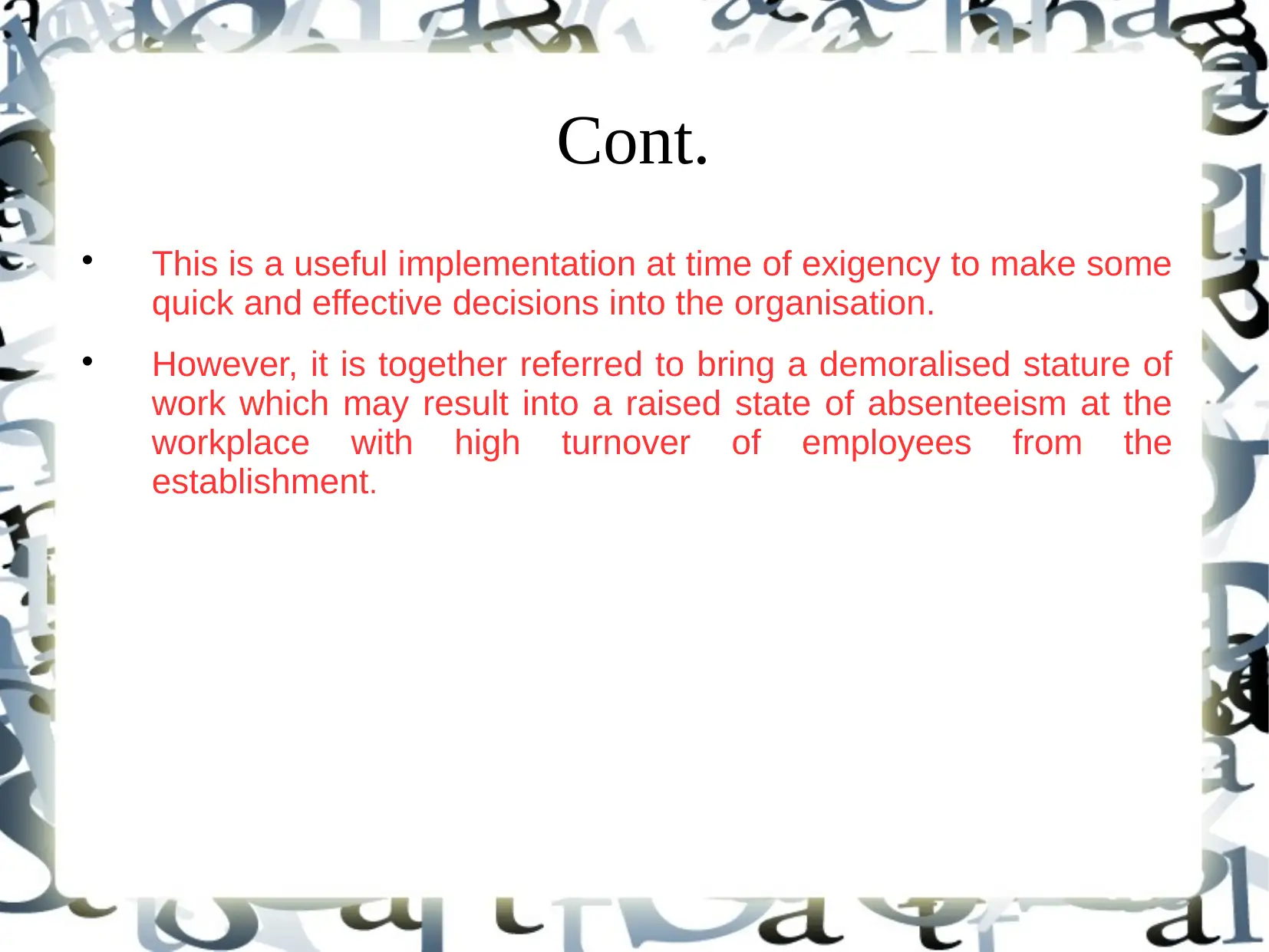
Cont.
This is a useful implementation at time of exigency to make some
quick and effective decisions into the organisation.
However, it is together referred to bring a demoralised stature of
work which may result into a raised state of absenteeism at the
workplace with high turnover of employees from the
establishment.
This is a useful implementation at time of exigency to make some
quick and effective decisions into the organisation.
However, it is together referred to bring a demoralised stature of
work which may result into a raised state of absenteeism at the
workplace with high turnover of employees from the
establishment.
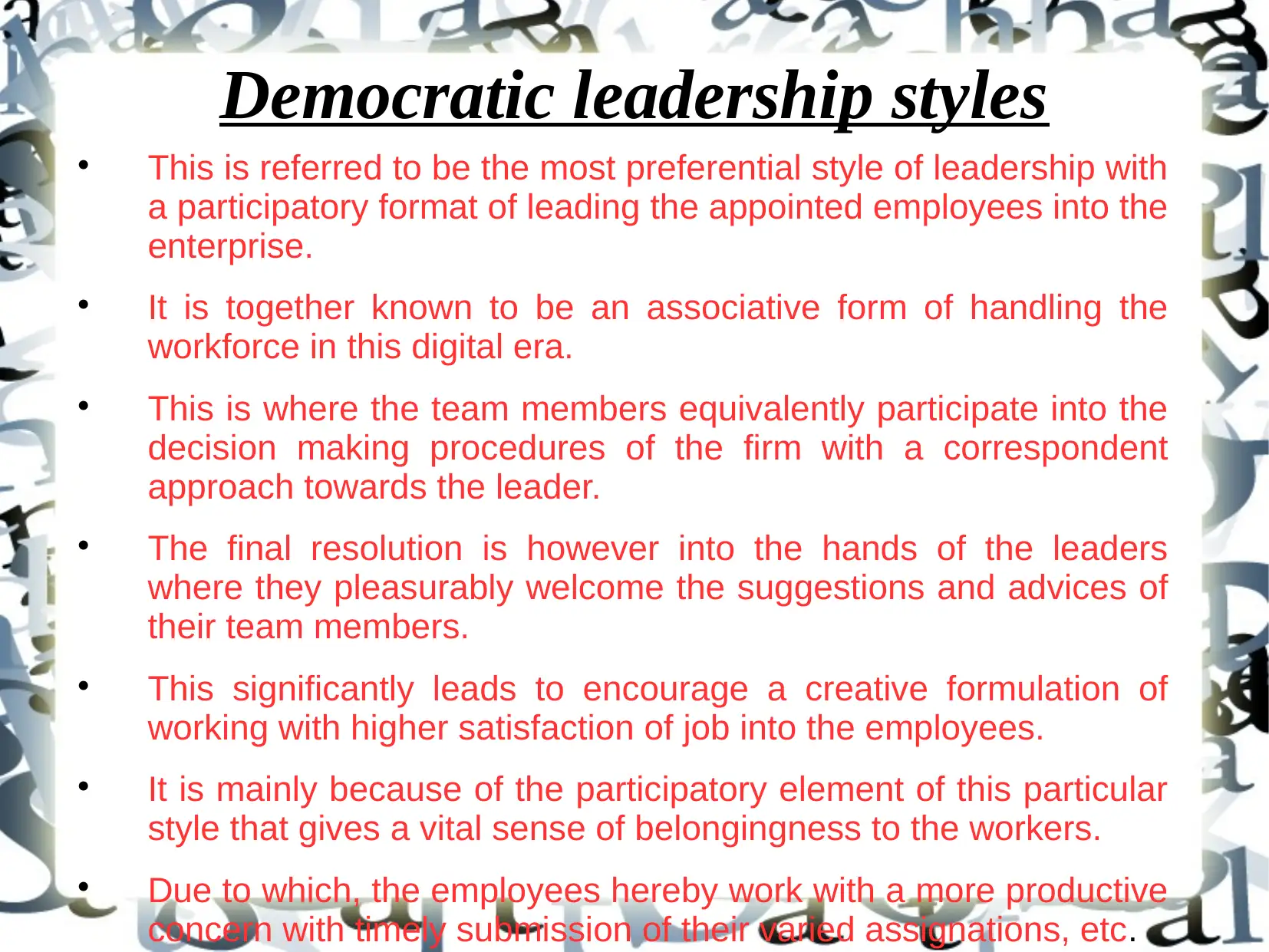
Democratic leadership styles
This is referred to be the most preferential style of leadership with
a participatory format of leading the appointed employees into the
enterprise.
It is together known to be an associative form of handling the
workforce in this digital era.
This is where the team members equivalently participate into the
decision making procedures of the firm with a correspondent
approach towards the leader.
The final resolution is however into the hands of the leaders
where they pleasurably welcome the suggestions and advices of
their team members.
This significantly leads to encourage a creative formulation of
working with higher satisfaction of job into the employees.
It is mainly because of the participatory element of this particular
style that gives a vital sense of belongingness to the workers.
Due to which, the employees hereby work with a more productive
concern with timely submission of their varied assignations, etc.
This is referred to be the most preferential style of leadership with
a participatory format of leading the appointed employees into the
enterprise.
It is together known to be an associative form of handling the
workforce in this digital era.
This is where the team members equivalently participate into the
decision making procedures of the firm with a correspondent
approach towards the leader.
The final resolution is however into the hands of the leaders
where they pleasurably welcome the suggestions and advices of
their team members.
This significantly leads to encourage a creative formulation of
working with higher satisfaction of job into the employees.
It is mainly because of the participatory element of this particular
style that gives a vital sense of belongingness to the workers.
Due to which, the employees hereby work with a more productive
concern with timely submission of their varied assignations, etc.
⊘ This is a preview!⊘
Do you want full access?
Subscribe today to unlock all pages.

Trusted by 1+ million students worldwide
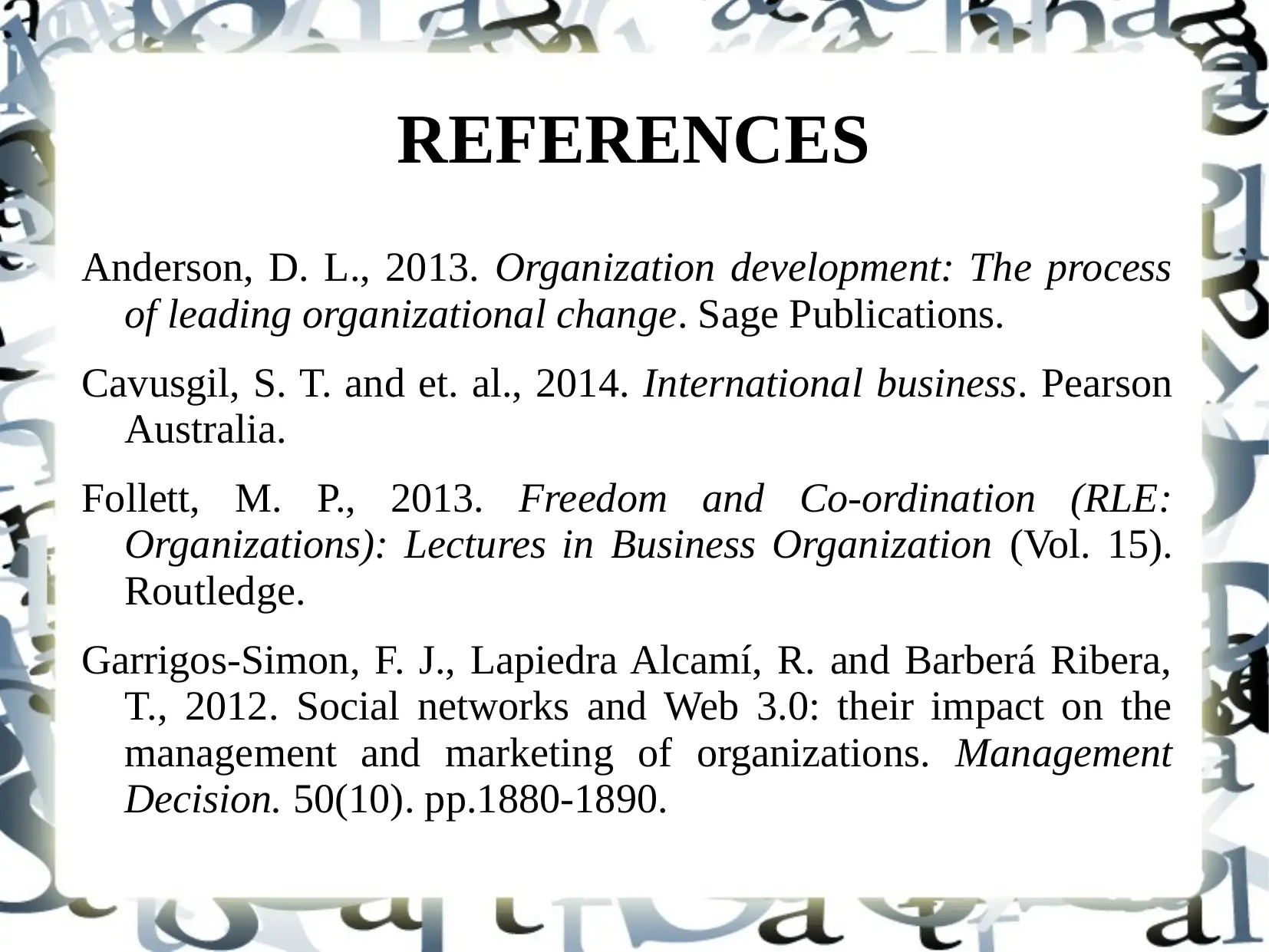
REFERENCES
Anderson, D. L., 2013. Organization development: The process
of leading organizational change. Sage Publications.
Cavusgil, S. T. and et. al., 2014. International business. Pearson
Australia.
Follett, M. P., 2013. Freedom and Co-ordination (RLE:
Organizations): Lectures in Business Organization (Vol. 15).
Routledge.
Garrigos-Simon, F. J., Lapiedra Alcamí, R. and Barberá Ribera,
T., 2012. Social networks and Web 3.0: their impact on the
management and marketing of organizations. Management
Decision. 50(10). pp.1880-1890.
Anderson, D. L., 2013. Organization development: The process
of leading organizational change. Sage Publications.
Cavusgil, S. T. and et. al., 2014. International business. Pearson
Australia.
Follett, M. P., 2013. Freedom and Co-ordination (RLE:
Organizations): Lectures in Business Organization (Vol. 15).
Routledge.
Garrigos-Simon, F. J., Lapiedra Alcamí, R. and Barberá Ribera,
T., 2012. Social networks and Web 3.0: their impact on the
management and marketing of organizations. Management
Decision. 50(10). pp.1880-1890.
Paraphrase This Document
Need a fresh take? Get an instant paraphrase of this document with our AI Paraphraser

THANK YOU
1 out of 8
Related Documents
Your All-in-One AI-Powered Toolkit for Academic Success.
+13062052269
info@desklib.com
Available 24*7 on WhatsApp / Email
![[object Object]](/_next/static/media/star-bottom.7253800d.svg)
Unlock your academic potential
Copyright © 2020–2025 A2Z Services. All Rights Reserved. Developed and managed by ZUCOL.





